The Boston Massacre stands as a pivotal moment in the annals of American history, encapsulating the tensions and struggles of colonial America on the brink of revolution.
Transpiring on the chilly evening of March 5, 1770, in the heart of Boston, Massachusetts, this tragic event left an indelible mark on the collective consciousness of the colonies.
As tensions between British soldiers and American colonists simmered, a clash erupted on the cobblestone streets outside the Custom House.
Initially sparked by resentment towards British taxation and occupation, the confrontation quickly escalated into a violent encounter.
Shots rang out, and when the smoke cleared, five colonists lay dead, their sacrifice amplifying the hunger for independence. But the significance of the Boston Massacre extends beyond the loss of life that fateful night.
It catalyzed galvanizing colonial sentiment against British oppression, fueling the flames of revolution.
Significance of the Boston Massacre
The Boston Massacre, a pivotal event on March 5, 1770, wasn’t just a deadly clash between colonists and British soldiers.
While the death toll of five colonists seems small compared to later battles, the massacre’s significance lies in its far-reaching and multifaceted impact on the colonies’ path toward independence.
Setting the Stage
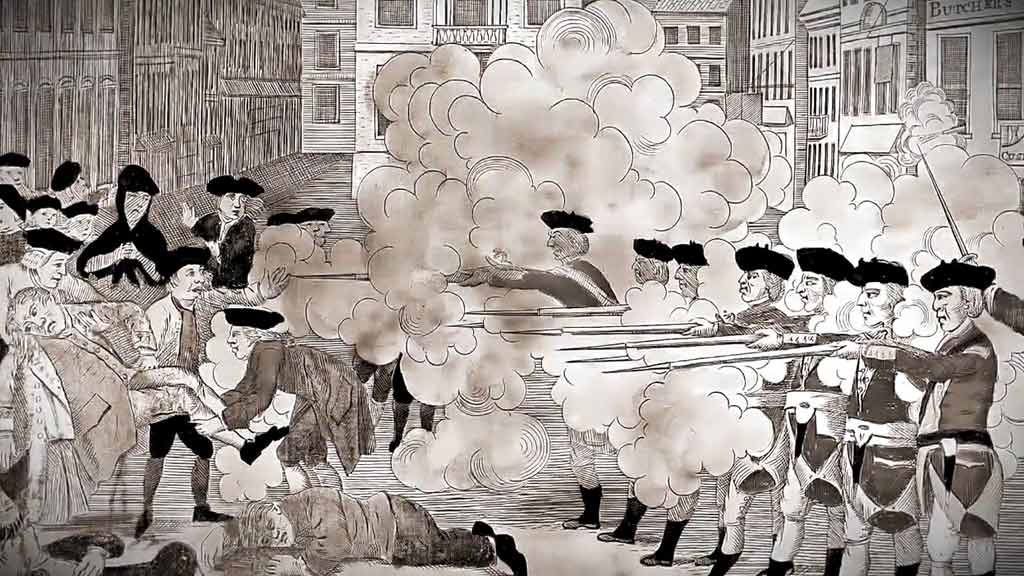
Understanding the massacre’s significance requires looking back at the pre-existing tensions simmering in the colonies. The late 1760s saw a crescendo of discontent against British policies.
The Townshend Acts imposed new taxes on essential goods like tea, angering colonists who resented taxation without representation.
Protests and Boycotts
The Quartering Act forced colonists to house and provide supplies for British troops, which was seen as an invasion of privacy and a financial burden. Colonists organized non-violent resistance, boycotting British goods and publicly expressing their grievances.
Boston, a hotbed of political dissent, served as the tinderbox for this volatile mix. British troops stationed there to enforce unpopular policies clashed with the increasingly frustrated populace. Verbal taunts escalated into altercations, creating a constant fear of violence.
The Night of March 5th
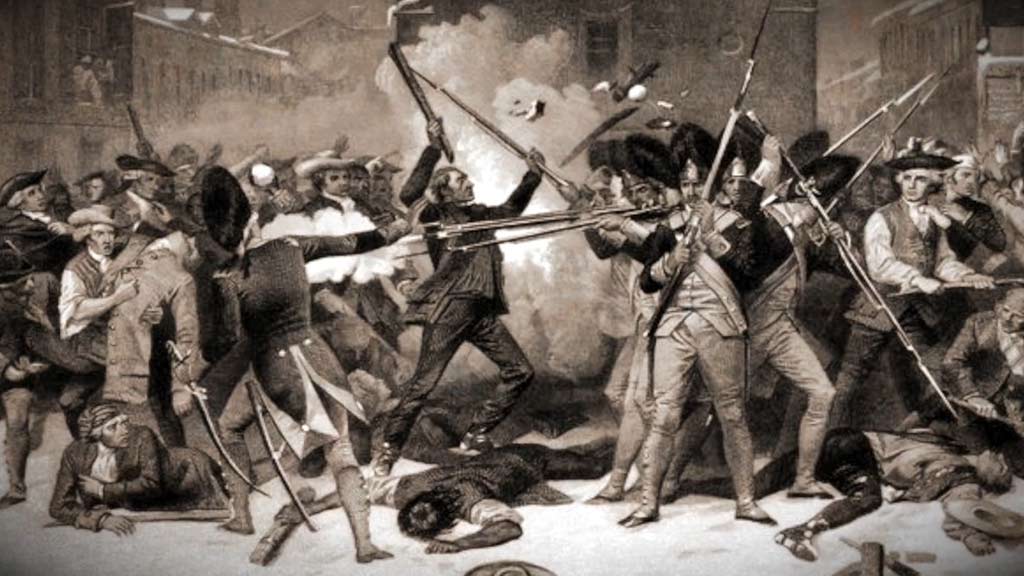
The exact sequence of events leading to the shooting remains disputed. However, the core narrative involves a small group of soldiers facing growing harassment from a crowd of colonists.
Accusations, insults, and thrown snowballs were met with taunts and threats from the soldiers. The situation spiraled, culminating in shots fired by the soldiers, leaving five colonists dead and several injured.
About the Ripple Effects
The massacre’s impact transcended the immediate casualties:
Fueling Public Outrage
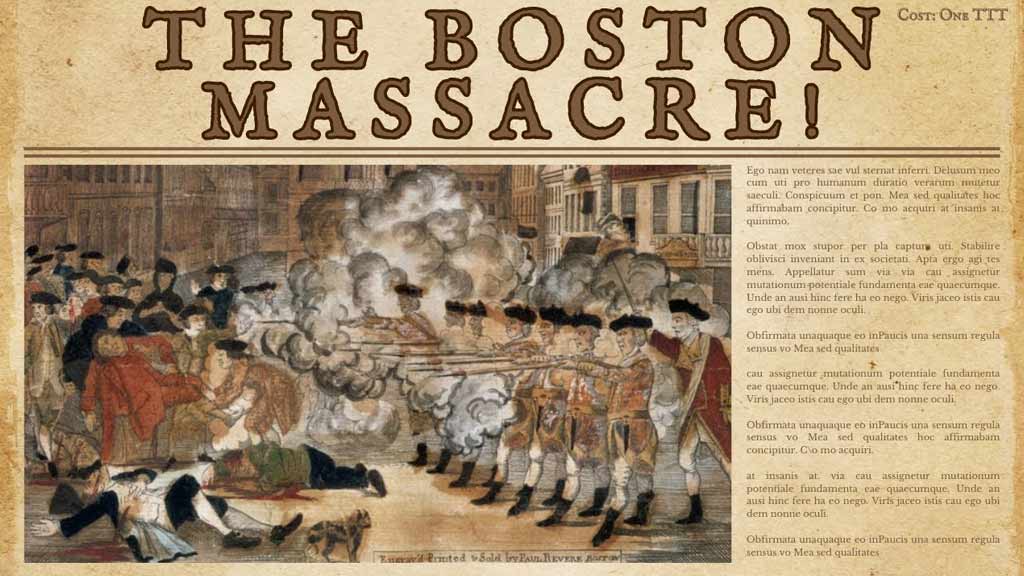
Colonists, fueled by news reports and inflammatory propaganda, saw the event as proof of British tyranny and oppression. Images depicting a massacre of innocent civilians by bloodthirsty soldiers became rallying cries against British rule.
Shaping Public Opinion
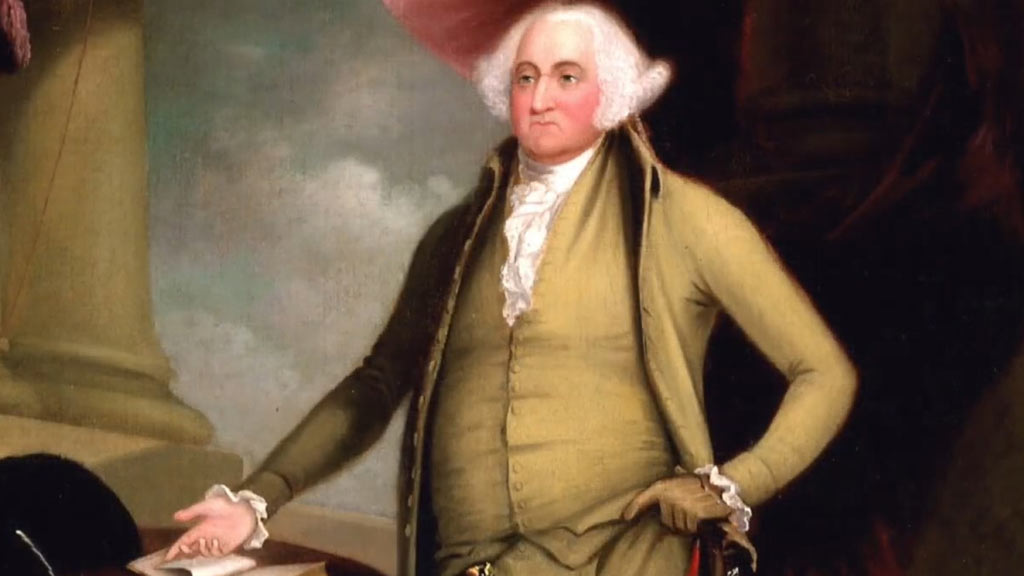
The event helped solidify public opinion in favor of independence. John Adams, initially critical of the mob, ultimately defended the soldiers, arguing for a fair trial while stressing the danger of standing armies stationed among civilians.
This nuanced approach appealed to the moderates, swaying them towards the patriot cause.
Legal Consequences
The trials of the involved soldiers became a battleground for the opposing ideologies. Their acquittal on murder charges, thanks to John Adams’ defense, further fueled anti-British sentiment. Colonists saw it as evidence of a biased system favoring the Crown.
Paving the Way for Unity
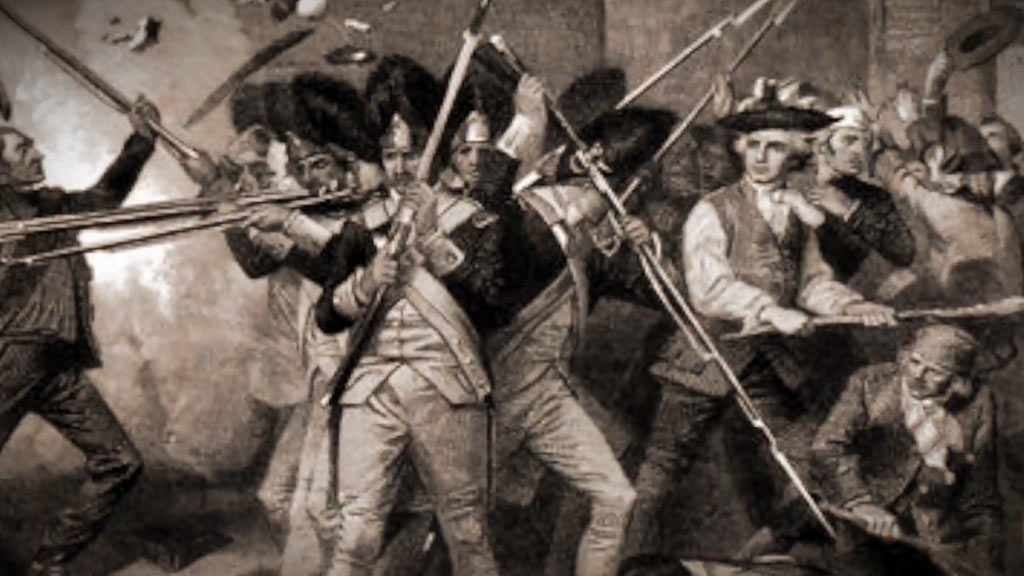
The massacre became a unifying symbol for the colonies. Protests and public gatherings condemned the event from New Hampshire to South Carolina, emphasizing the shared grievances against British rule. This fostered a sense of shared identity and purpose, crucial for the coming revolution.
Birth of Propaganda
Paul Revere’s famous engraving depicting the massacre as a cold-blooded attack by British soldiers on unarmed civilians was widely circulated. This use of propaganda to shape public opinion became a potent tool throughout the revolution.
Looking Back at the Defining Moment
The Boston Massacre wasn’t the first spark of the American Revolution, but it ignited a firestorm of anti-British sentiment. It served as a turning point, pushing the colonies closer to independence. Its significance lies in:
Highlighting the deep-seated tensions as it laid bare the simmering resentment towards British policies and the fear of standing armies.
What Was the Aftermath of the Boston Massacre?
The aftermath of the Boston Massacre reverberated throughout the colonies, intensifying anti-British sentiment and fueling the flames of revolution. Here’s a detailed exploration of the events that unfolded in the wake of this pivotal moment in American history:
Colonial Outrage
The news of the Boston Massacre spread rapidly, igniting widespread outrage among the colonists. The incident further strained the tense relationship between the British authorities and the American populace.
Public Discourse
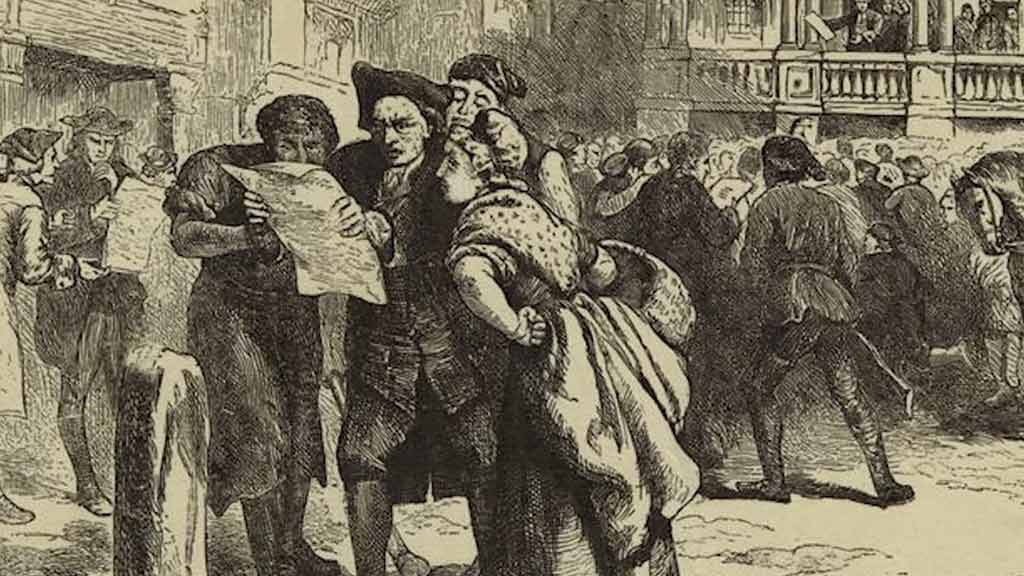
Colonial newspapers and pamphleteers seized upon the event, disseminating accounts that portrayed the British soldiers as ruthless oppressors and the colonists as innocent victims. This propaganda campaign galvanized support for the colonial cause and fueled anti-British sentiment.
Legal Proceedings
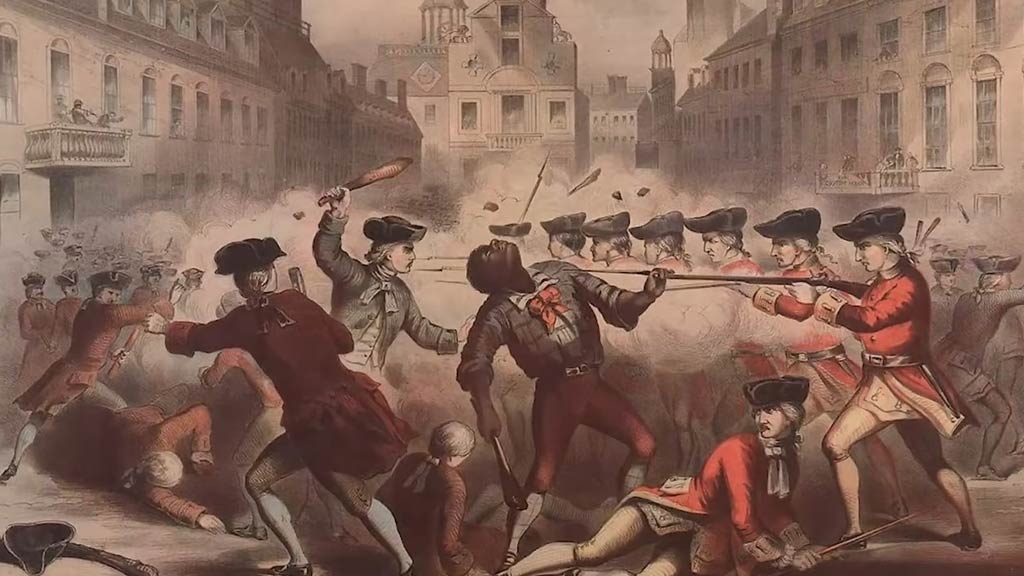
Following the massacre, eight British soldiers, including their commanding officer, Captain Thomas Preston, were arrested and charged with murder.
Amid fears of bias in Boston, the trials were moved to a neutral venue in Plymouth, Massachusetts.
John Adams’ Defense
Prominent colonial lawyer John Adams, who would later become the second President of the United States, provided a vigorous defense for the accused soldiers. Adams argued that they had acted in self-defense in the face of a hostile and threatening crowd.
Verdict
Six of the soldiers were acquitted, while two were found guilty of manslaughter. However, they were spared the death penalty and instead branded on the thumb.
Propaganda Tool
The Boston Massacre was exploited by colonial leaders such as Samuel Adams and Paul Revere as a potent symbol of British tyranny. Images depicting the event were circulated widely, further stoking anti-British sentiment and strengthening the resolve for independence.
Committees of Correspondence
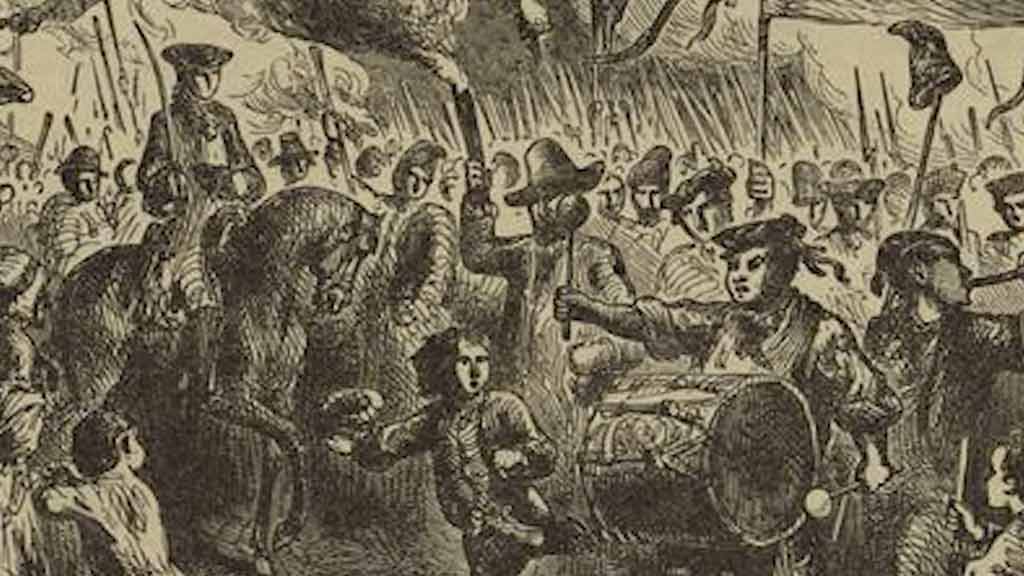
The massacre prompted the establishment of Committees of Correspondence in Massachusetts and other colonies. These committees served as a means of communication between the colonies, fostering unity and coordination in resistance efforts against British policies.
Growing Opposition
The Boston Massacre intensified colonial opposition to the Townshend Acts, which imposed taxes on imported goods.
In response to the massacre and the continued presence of British troops in Boston, colonists organized boycotts of British goods and engaged in protests, heightening economic pressure on British merchants.
Repeal
Under mounting pressure from British merchants suffering from the colonial boycotts and fearing further unrest, Parliament repealed most of the Townshend Acts in 1770. However, they retained the tax on tea, leading to the Boston Tea Party in 1773.
Symbol of Resistance
The Boston Massacre became a potent symbol of colonial resistance to British oppression, inspiring future generations of Americans in their quest for freedom and self-determination.
Propaganda War
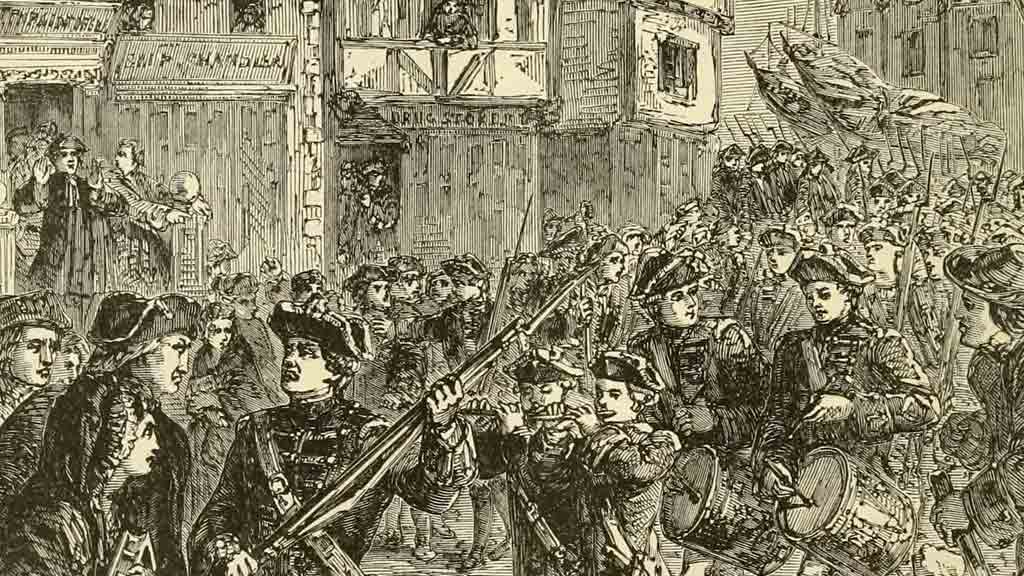
The event demonstrated the power of propaganda in shaping public opinion and mobilizing support for revolutionary causes.
The aftermath of the Boston Massacre accelerated the march towards independence, as the colonists became increasingly convinced of the need to break free from British rule and forge their destiny.
How Many People Died in the Boston Massacre?
The Boston Massacre, a pivotal event in American history, resulted in the tragic loss of five lives on the evening of March 5, 1770. Here’s a detailed account of the individuals who perished during this fateful incident:
Crispus Attucks
Crispus Attucks, of African and Native American descent, is perhaps the most well-known victim of the Boston Massacre. Attucks was at the forefront of the confrontation between the colonists and British soldiers outside the Custom House.
He was struck by two bullets during the altercation and succumbed to his injuries on the scene.
Samuel Gray
Samuel Gray was a ropemaker by trade and a resident of Boston. Gray was among the crowd gathered outside the Custom House, protesting against British taxation and presence in the colonies. He was shot and killed during the altercation, becoming one of the casualties of the massacre.
James Caldwell
James Caldwell, a sailor, was also present during the confrontation on King Street. Like many others, Caldwell protested against British policies and troops in Boston.
He was shot and fatally wounded during the skirmish, adding to the casualties of the massacre.
Samuel Maverick
Samuel Maverick, another victim of the Boston Massacre, was a seventeen-year-old apprentice ivory turner. Like his fellow colonists, Maverick participated in the protest on King Street. He was shot and killed during the altercation, tragically losing his life in the struggle for colonial rights and freedoms.
FAQs
What was the Boston Massacre?
The Boston Massacre was a deadly confrontation between British soldiers and American colonists on March 5, 1770, in Boston, Massachusetts. It resulted in the deaths of five colonists and played a significant role in escalating tensions between the colonies and Britain.
What led to the Boston Massacre?
The Boston Massacre was fueled by growing resentment among colonists towards British policies, including taxation without representation and the presence of British troops in Boston.
A confrontation erupted when a crowd of colonists clashed with British soldiers outside the Custom House.
How did the Boston Massacre impact the American Revolution?
The Boston Massacre galvanized colonial opposition to British rule and served as a rallying cry for the anti-British movement.
It heightened tensions between the colonies and Britain, leading to increased resistance efforts and ultimately contributing to the outbreak of the American Revolutionary War.
Who were the victims of the Boston Massacre?
The victims of the Boston Massacre were Crispus Attucks, Samuel Gray, James Caldwell, Samuel Maverick, and Patrick Carr. They were all colonists who were shot and killed by British soldiers during the confrontation on King Street.
What were the consequences of the Boston Massacre?
The aftermath of the Boston Massacre included the trials of the British soldiers involved, the repeal of some of the Townshend Acts, increased colonial unity and resistance against British rule, and the proliferation of anti-British sentiment throughout the colonies.
Conclusion
The Boston Massacre remains a seminal event that reverberates through the corridors of American history, symbolizing the struggle for liberty and self-determination.
Its significance lies in the tragic loss of life and the awakening of a collective consciousness that propelled the colonies towards independence.
The bloodshed on that fateful night served as a rallying cry, uniting disparate voices in a common cause against tyranny and oppression.
Moreover, the Boston Massacre spurred crucial debates on the role of government and the rights of citizens, laying the groundwork for the principles enshrined in the Declaration of Independence and the Constitution.
As we reflect on its legacy, we are reminded of the resilience and courage of those who dared to challenge the status quo, forever altering the course of American destiny. The lessons gleaned from the Boston Massacre continue to resonate, inspiring future generations.
Laura Chassaigne